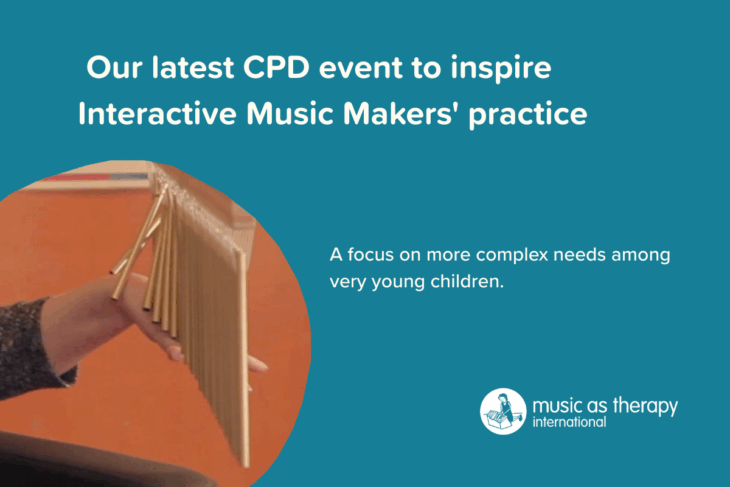Our latest CPD event to inspire Interactive Music Makers’ practice: A focus on more complex needs among very young children
United Kingdom
- Caregivers
- Children
- Disability
- Interactive Music-Making

We started off thinking about how to extend the children’s enjoyment of sharing an ocean drum with the Interactive Music-Maker, supported by the nursery rhyme “Row Row Row your Boat”. We talked about using a new song to create the opportunity to explore different movements, such as “What shall we do with the drunken sailor” which might extend the experiences being offered to each child: Lilting, dynamic movements up and down like a rolling ship (as opposed to the steadier backwards and forwards of sensible rowing!)
Whilst it can be extremely valuable to offer children new experiences they might not be able to initiate themselves, our conversations led on to thinking about how to create more space so children can have influence themselves and use their contributions as the focus of an activity? Sometimes it can be helpful to strip away the structure of a verse and chorus, with a memorable tune that carries everyone along with it. This takes confidence, particularly if you have other supporting adults in a session and you might find yourself worrying about their expectations of you as the music leader! We talked about creating a very simple sung line to frame space within which there is time for a child to respond or engage with an offered musical instrument (“This is how Susy plays……. This is how Susy plays….. Listen to Susy play…..Listen to Susy….”) When children need a lot of time to process their experiences and respond or engage, session leaders can find themselves worrying about other children in the room waiting, so thinking about ways to acknowledge they are waiting and invite them to focus on the music-making of another child (e.g. “This is how Susy plays…. This is how Susy plays…. Arlo is listening/dancing/waiting… while we listen to Susy….”)
We spoke about how traditionally we often look at children’s hands, fingers, arms, legs and feet to see how they are engaging with the instruments we offer. But when children have limited physical mobility, we need to pay attention across their whole physique. Their speed of breathing, small changes to eye gaze or flickers of muscles in the face, can all be starting points for us to provide a musical response. By attuning to these physical responses in our children, and using them to shape our music-making, we can build their sense sense of agency and influence. This can be really important for children who, in many situations, have few opportunities to effect things that happen around them.
And finally, we considered the different ways we can make musical instruments accessible to children with limited movement and how we can facilitate their own music-making, without being tempted to play for or to them. For example, holding a cabasa against a child’s hand or some cluster chimes next to a child’s head and waiting, really waiting, until a small muscle movement or change in visual attention, can be taken as a cue to move the instrument away, generate an initial sounds from it and then for the session leader to extend this by playing an answering musical phrase.
Our next Interactive Music-Making CPD event will be held in the autumn term, but any of our Interactive Music-Makers are always welcome to get in touch if they’d like to have a chat, to celebrate what they’ve been doing with their music sessions, or to trouble shoot the inevitable challenges we encounter with these unique individuals with whom we are lucky enough to work!
Related projects
-
Structured Training: Interactive Music-Making (London) 2024
United Kingdom
- Children
- Disability
